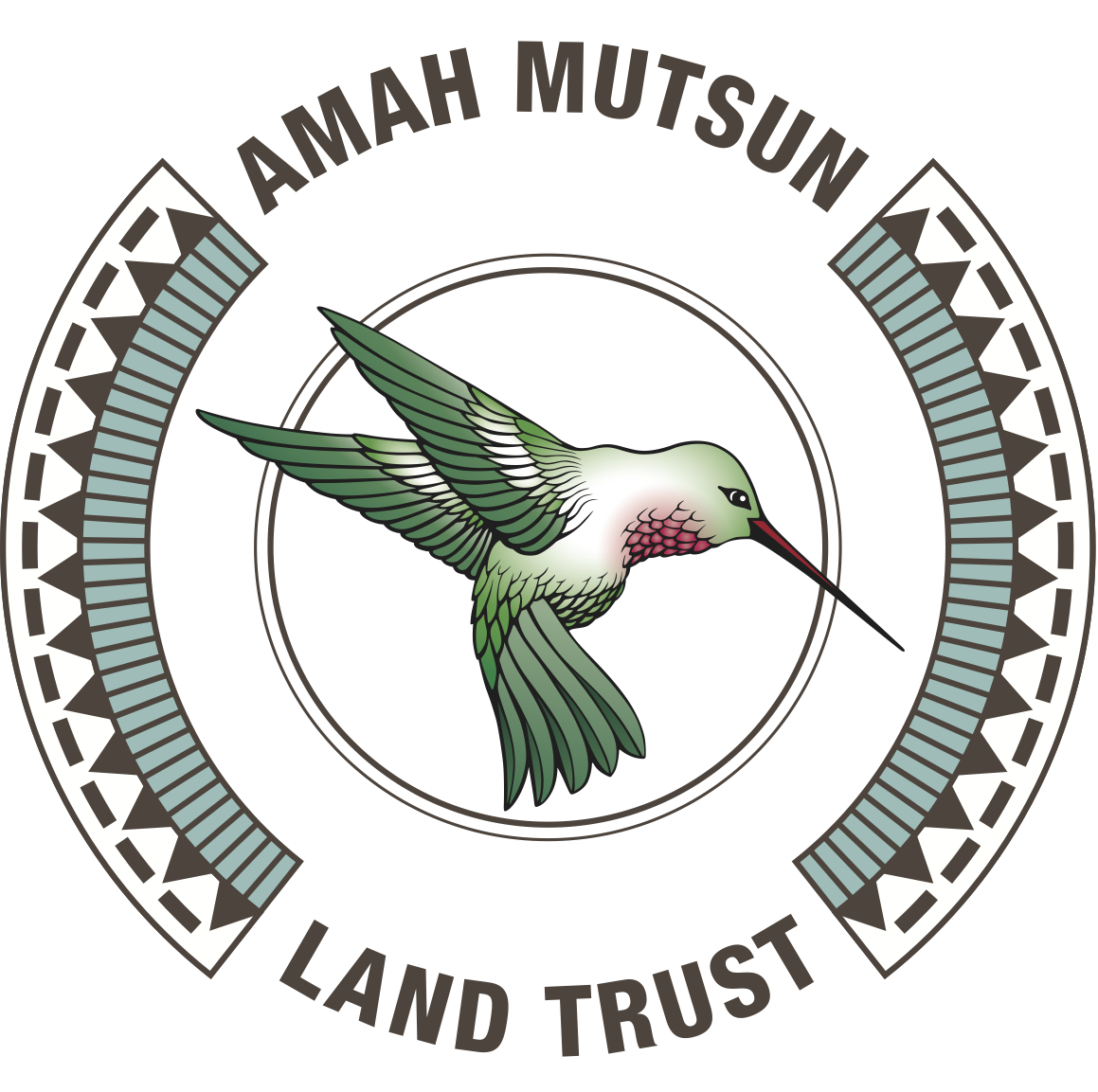Spring 2025 Newsletter
To return to the newsletter, click here.
Notes from the Native Stewardship Corps: My Reflections on an Archaeological Assessment
By Elizabeth Rodriguez, AMLT Program Intern and Tribal Member
AMLT Program Intern and Tribal member Elizabeth Rodriguez recently participated in an archaeological assessment for a proposed build project at the Santa Cruz Museum of Natural History. She was joined by fellow Program Intern and Tribal member Jacob Girouard, AMLT Cultural Resources Manager Alec Apodaca, and former Supervisor of the Cultural Resources Program for the Santa Cruz District of California State Parks Mark Hylkema. Below, she reflects about her experience conducting the survey and learning more about applications of AMLT’s Indigenous archaeology methods.
Elizabeth Rodriguez and Jacob Girouard, AMLT Program Interns and Tribal members, looking at a map of California Tribes at the Santa Cruz Museum of Natural History. Photo credit Elizabeth Rodriguez.
Outside on the grass surrounding the Museum, there were flags set up that marked where we were going to collect soil samples from. To do this, we would be using augers. An auger is a drill-like tool used in archaeology that allows soil samples to be collected carefully and efficiently. Augers allow you to go down deeper than a surface survey unit and bring up the soil onto a tarp. Then, you can examine the soil to see if there are any cultural materials present. Augers are the best method to identify cultural sites because cultural materials are usually not at the surface level and it is necessary to look deeply into the soil. While collecting and examining soil samples, we also had to fill out the paperwork as a part of the archaeological assessment. The paperwork involved marking what unit was being done and writing down what cultural materials were there, if any. This was my first time using augers, and I will say that it gives you an arm workout because you’re twisting it so that it can go deep into the ground. By the end of the day, we had completed an assessment of nine soil samples.
During this trip, I saw how archaeology can be used when you want to ensure cultural materials are not buried in a certain place. At the same time, it was great to hear the Museum’s aspirations for what they hope to build and extend. A field trip was happening simultaneously, so hearing the footsteps from upstairs along with their aspirations, I could tell how much the community utilized the Museum.
After the day, I was able to eat with my cousins at Woodstock’s Pizza, and we went over our thoughts about the day and had more cousin bonding time. We then said our goodbyes, and I returned to the Sunlit house. I’m thankful to Alec Apodaca for providing this opportunity to continue my learning about archaeology and connect with family.
Jacob Girouard, AMLT Program Intern and Tribal member, analyzing soil samples. Photo credit Elizabeth Rodriguez.
When I was asked by Alec Apodaca to work on an archaeology survey with AMLT, I said yes so I could learn more about other aspects of the archaeology field. This opportunity was to look at the Santa Cruz Museum of Natural History landscape to ensure no sensitive cultural materials were buried where the Museum wished to develop and expand, and to inspect a nearby cultural site that was a few blocks away.
I drove from Fresno to Santa Cruz and was able to stay at the AMLT Sunlit house. I’m grateful to have stayed the night before because the drive was less intense in the morning. I arrived at the Museum at 9 am, and I was able to meet Mark Hylkema, who’s retired from California State Parks. It was nice meeting him and learning about his work as an archaeologist and the people he has worked with. I learned that he is on the board of directors for the Santa Cruz Museum of Natural History. I also met others from the Museum, and they offered us food and drinks. Jacob and Esak joined me for the survey. We were in the basement of the Museum, discussing the plans for the day and reviewing the history of the area. We got to look at a book that showed different Olivella shells throughout time and a book with a map of California Tribes.
Elizabeth and Jacob, joined by AMLT Native Steward and Tribal member Esak Ordoñez, use augers to collect soil samples during an archeological assessment at the Santa Cruz Museum of Natural History. Photo credit Santa Cruz Museum of Natural History.
Elizabeth and Esak analyzing soil samples and completing survey paperwork with Mark Hylkema, former State Parks archeologist and long time partner of AMLT and the AMTB. Photo credit Santa Cruz Museum of Natural History.
Elizabeth Rodriguez, AMLT Program Intern and Tribal member, using an auger to collect soil samples. Photo credit Elizabeth Rodriguez.
Click here to read a previous reflection on archeology by Elizabeth from last summer’s Archeology Field School Summer Intern Program.
Click here to learn more about AMLT’s frameworks and applications of Indigenous archeology.





